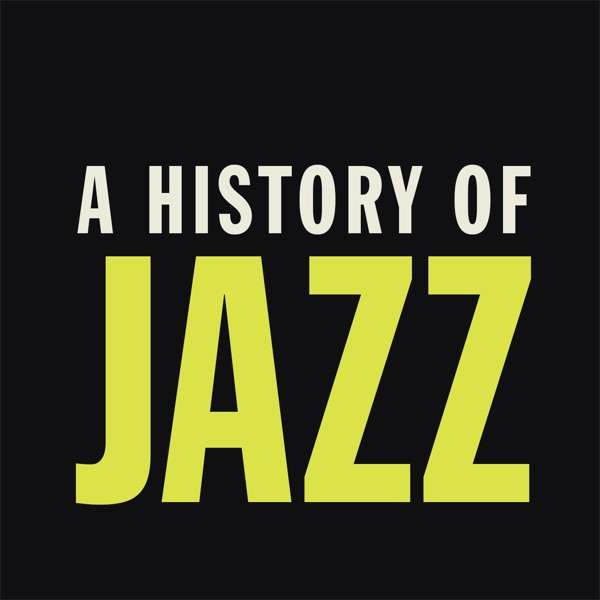Loudini: Princess Bride Story, Pearl Jam actually plays LIVE(wings of pegesus), New Star Wars Trilogy(star wars meg), 10 Things You Didn’t Know About Baywatch, switching them songs, pam anderson rejected by the hoff, spooky spin off, most watched show in the world,(minty), The Story of Hotel California, real hotel, wrong key, wrong tempo, forgotten guitar parts, black sabbath jamming along, 33 edits (david hartley), the captain plays killer bassline, sedaka flop, played with sklar, multi layered, hal blaine, spanish language version was a hit (pdbass), Swifty Psy-op?(joe rogan), Sir Paul SNL50, Paul Simon SNL50, Loudini Asked to audition for Queensryche tribute, youtube journey, The Gorge
Pittsburgh Kevin: 2001 A Space Odessy, The Fanatic, Don Felder emergency, plan 9, 74 Les Paul Custom, so bad it’s good: GOATandyourmom; Quack Like a Duck
Lily: RIP Mom
Rock History This Week:
This Week In Rock – February 18 – February 24
BORN THIS WEEK IN ROCK HISTORY:
Yoko Ono: February 18, 1933
Dennis DeYoung: February 18, 1947 (Vocals, Styx)
2/19/1940 – Smokey Robinson
2/19/1948 – Tony Iommi (guitar, Black Sabbath)
2/19/1948 – Mark Andes (bass, Canned Heat)
2/19/1965 – Jon Fishman (drums, Phish)
2/20/1950 – Walter Becker (bass/guitar, Steely Dan)
2/20/1967 – Kurt Cobain (lead vocals and guitar, Nirvana)
2/21/1933 – Nina Simone (roots music vocalist)
2/21/1943 – David Geffen (founder, Asylum Records, Geffen Records)
2/23/1944 – Johnny Winter (blues rock guitarist and vocalist)
2/23/1952 – Brad Whitford (guitar, Aerosmith)
2/24/1942 – Paul Jones (vocals and harmonica, Manfred Mann, The Blues Band)
2/24/1944 – Nicky Hopkins (pianist/organist, worked with The Rolling Stones, Jeff Beck, The Beatles, The Who)
2/24/1947 – Lonnie Turner (bass, Steve Miller Band)
DIED THIS WEEK IN ROCK HISTORY
2/19/1980 – Bon Scott (lead vocals, AC/DC)
2/19/207 – Larry Coryell (jazz fusion guitarist)
2/22/1989 – Andy Warhol (manager, The Velvet Underground)
2/23/1997 – Tony Williams (jazz drummer)
2/23/2003 – Howie Epstein (bass, Tom Petty & the Heartbreakers)
2/24/1994 – Papa John Creech (violin, Jefferson Airplane)
MUSIC RELEASES AND TOP OF THE CHARTS
2/19/1949 – John Lee Hooker’s “Boogie Chillen” at #1 on the R&B charts
2/19/1985 – Mick Jagger releases his first solo album
2/20/1979 – George Harrison puts out his 8th self-title album
2/21/1979 – Dire Straits by The Dire Straits goes gold
2/21/1964 – The Rolling Stones release “Not Fade Away” a Buddy Holly cover
2/21/1966 – The Beatles release “Nowhere Man”
2/21/1981 – Hi Infidelity by REO Speedwagon reaches #1 in America
2/22/1969 – The Beatles record “I Want You (She’s So Heavy)”
2/23/1970 – Morrison Hotel by The Doors goes gold (their fifth album in a row to do so)
2/24/1975 – Led Zeppelin releases Physical Graffiti
2/24/1976 – Their Greatest Hits (1971-1975) by The Eagles is the first ever platinum album
THIS WEEK IN ROCK HISTORY
2/19/1965 – Rod Stewart plays with the band The Soul Agents at a club in Harrow England, which is his first major performance.
2/19/1987 – Taj Mahal plays a concert at the Palomino Club in Hollywood and is joined onstage by George Harrison, John Fogerty, and Bob Dylan for an impromptu jam session. Some of the songs played by this who’s who of rock, included Fogerty’s “Proud Mary,” Dylan’s “Watching the River flow” as well as some classics of rock ‘n’ roll including “Blue Suede Shoes,” and “Peggy Sue.”
2/19/1974 – KISS makes their first television appearance on the show Don Kirshner’s Rock Concert, aired on ABC.
2/20/1975 – Lost Angeles declares that it is “Johnny Cash Day”
2/20/2009 – The White Stripes play on the last episode of Late Night With Conan O’Brien, which is also their final gig as a band. They perform the song “We’re Going To Be Friends.” The performance is intimate and with a slightly different musical arrangement form the traditional way it is performed. Additionally, it features Meg White coming out from her drum kit to join Jack White on guitar and sing some lines in unison.
2/21/2001 – Johnny Cash wins his tenth Grammy award, for the song “Solitary Man” in the category of “Best Male Vocal Country Performance.” The song is a 1966 Neil Diamond hit that Cash recorded for his LP American III: Solitary Man, a mostly covers album that was produced by mega-producer Rick Rubin.
2/21/1961 – The Beatles make their first appearance at Liverpool’s Cavern Club. They will play regular lunchtime gigs there.
2/21/1958 – Gibson ships their first “Flying V.” The shipment was from a Kalamazoo, Michigan factory. The unique shape of the guitar created an almost mystical allure around the instrument, appealing to early adopters like Albert King and Lonnie Mack, as well as later guitar heroes like Jimi Hendrix, Johnny Winter, Billy Gibbons, and even Lenny Kravitz.
2/22/1974 – Great blues band Ten Years After play their final live show in London
2/22/1989 – The first Grammy award for the “Best Hard Rock/Metal Performance” category is awarded to Jethro Tull. They beat Metallica. Wrap your head around that…
2/22/1994 – Prince officially is given the trademark on the symbol he had been using instead of an actual name.
2/23/1971 – Dire Straits embark on their very first US tour.
2/23/1993 – Little Richard is presented with a Lifetime Achievement Grammy
2/23/2000 – Mule Variations by Tom Waits wins the “Best Contemporary Folk Album” Grammy. The album’s guests included Les Claypool on bass, and John Hammond and Charlie Musselwhite playing the blues harp.
2/23/2000 – Carlos Santana wins eight Grammy Awards for the highly popular album Supernatural
2/24/1969 – Jimi Hendrix’s Experience play their final show in the UK at the Royal Albert Hall.
2/24/1976 – The Eagles’ Greatest Hits album is the first album certified Platinum by the RIAA
2/24/1993 – Eric Clapton wins big at the Grammy Awards, taking three awards for “Tears In Heaven” two more for his album Unplugged, and Best Rock Song for his acoustic version of “Layla.”
Your Week In Rock 2025:
As of February 18, 2025, several classic rock artists have announced new music releases and tour plans. Here's a summary of the latest events:
Steven Tyler sings again.
Paul Simon Announces 'A Quiet Celebration Tour'
Following his performance at the "SNL50" celebration on February 16, Paul Simon has announced his 'A Quiet Celebration Tour.' This marks his return to touring since his 2018 'Homeward Bound Farewell Tour.' The tour will run from April to August 2025, featuring multiple dates, including five shows at New York City's Beacon Theatre in June. Tickets will be available starting February 21. Simon is expected to perform a mix of classic hits and songs from his recent album "Seven Psalms." citeturn0news19
Tom Jones to Headline Discovery Festival in Scotland
Tom Jones, at 84, will headline the Discovery Festival in Dundee, Scotland, on July 27, 2025, as part of his 'Defy Explanation' tour. The three-day event, from July 25-27, also features performances by Ocean Colour Scene, The Fratellis, and The Human League. Tickets go on sale February 21, with presales beginning February 19. citeturn0news21
Pat Benatar and Neil Giraldo Announce 2025 Tour
Pat Benatar and Neil Giraldo have announced a 26-concert North American tour starting in April and ending in June 2025. Tickets are available for purchase on Vivid Seats. In addition to the tour, the couple is releasing a children's picture book titled "My Grandma and Grandpa Rock!" on September 9, 2025. citeturn0news24
Black Sabbath's Final Concert: 'Back to the Beginning'
Black Sabbath has announced a final concert, 'Back to the Beginning,' scheduled for July 5, 2025, at Villa Park in Aston, Birmingham. This performance will feature the original lineup—Ozzy Osbourne, Tony Iommi, Geezer Butler, and Bill Ward—and marks their first live performance together in eight years. The event will also include performances by Metallica, Slayer, and Pantera. citeturn0search29
Guns N' Roses 2025 Tour Dates
Guns N' Roses have announced their 2025 tour schedule, covering Europe and the Middle East. The tour will start on May 23 in Riyadh, Saudi Arabia, and conclude on July 31 at the Wacken Open Air music festival in Germany. Select performances will feature special guests such as Rival Sons, Public Enemy, and a reformed lineup of the Sex Pistols. citeturn0news36
Oasis Announces 2025 Reunion Tour
Oasis has announced a reunion tour in 2025, marking their first performances together since 2009. The tour will begin on July 4 at the Principality Stadium in Cardiff, Wales, and will include dates across the UK, Ireland, North America, Australia, South America, and Asia. Support acts include Cast, Richard Ashcroft, and Cage the Elephant. citeturn0search30
Ringo Starr's 2025 Tour and New Album
Ringo Starr will embark on a ten-concert summer tour with his All-Starr Band in June 2025. The tour supports his new country album "Look Up," set for release on January 10, 2025. The All-Starr Band features musicians from classic rock bands such as Toto, Men At Work, and Aerosmith. A notable performance is scheduled at New York's Radio City Music Hall on June 13. citeturn0news32
Pearl Jam's 'Dark Matter World Tour'
Pearl Jam is currently on their 'Dark Matter World Tour' in support of their twelfth studio album, "Dark Matter." The tour began on May 4, 2024, and is scheduled to conclude on May 18, 2025, at the PPG Paints Arena in Pittsburgh. The tour includes multiple legs covering Europe, North America, and Oceania. citeturn0search33
AC/DC's 'Power Up Tour'
AC/DC has announced their 'Power Up Tour,' with dates across Europe and North America. The tour supports their album "Power Up" and features bassist Chris Chaney. The European leg concluded in Dublin on August 17, 2024, and the North American leg is scheduled from April to May 2025. citeturn0search34
Supergrass Celebrates 30th Anniversary of 'I Should Coco'
Supergrass has announced a tour to celebrate the 30th anniversary of their debut album "I Should Coco." The tour will kick off in Glasgow at the Barrowland Ballroom on May 8, 2025, and will visit various cities before concluding at The Great Estate Festival in Cornwall on May 31. citeturn0news35
Foreigner Inducted into Rock & Roll Hall of Fame
Foreigner will be inducted into the Rock & Roll Hall of Fame this October after more than 20 years of eligibility. The band, known for hits like "Cold as Ice" and "I Want to Know What Love Is," joins other notable inductees such as Mary J. Blige and Ozzy Osbourne. citeturn0news37
Rediscovered Tina Turner Track Released
A recently rediscovered Tina Turner track, titled "Hot for You Baby," has been included in a new edition of her 1984 album, "Private Dancer." However, critics suggest that the song lacks the anthemic power of the original tracks. citeturn0news39
Rick Buckler of The Jam Passes Away
Rick Buck

 Our TOPPODCAST Picks
Our TOPPODCAST Picks  Stay Connected
Stay Connected







